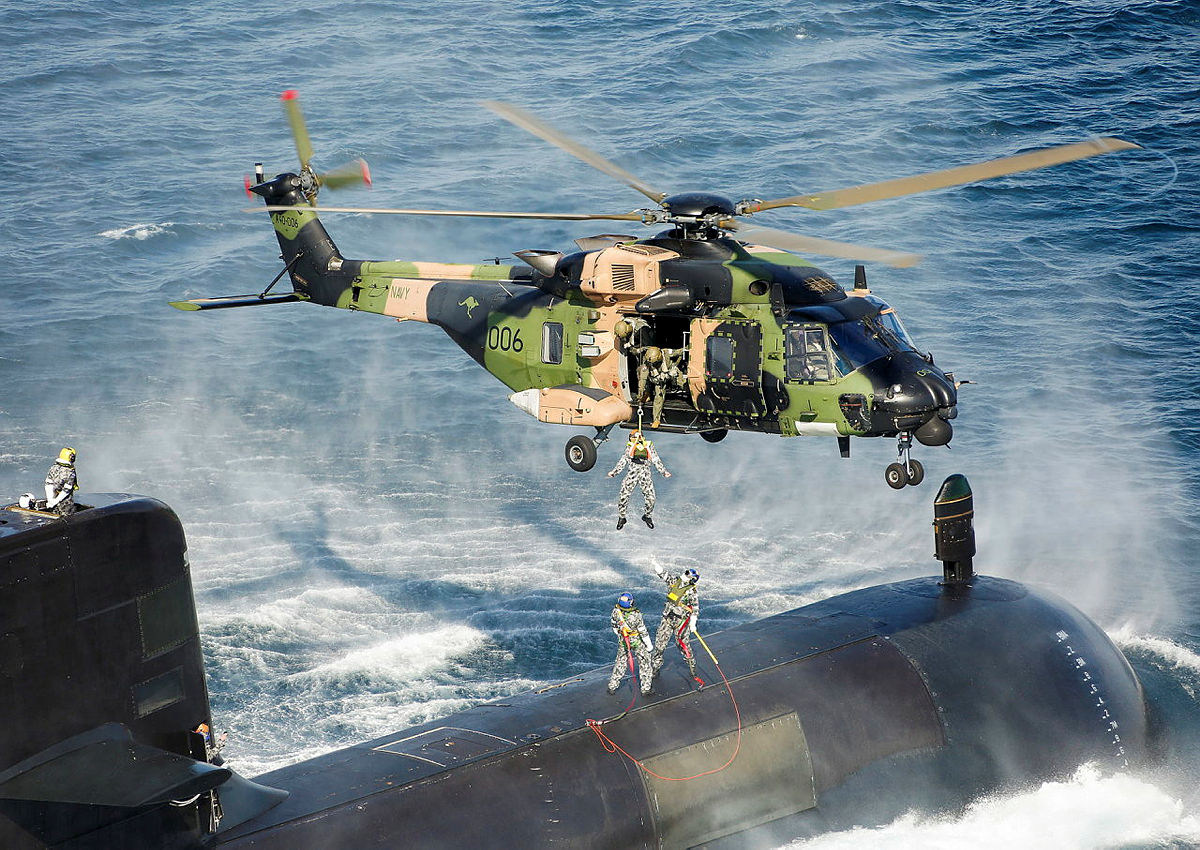Following persistent technical issues and a string of mishaps involving Australia’s MRH-90 Taipan helicopter fleet, the country’s Department of Defense has reportedly started dismantling the troubled choppers.
According to reports, technicians are presently discreetly disassembling all of the Army’s Taipan helicopters and burying their components at a defense site.
The report indicates no plans to sell these helicopters or their components to another country despite being valued at approximately US$20 million in the secondary market.
In October, France-based NH Industries (NHI), the manufacturer of MRH-90 helicopters, disclosed that they are negotiating with the Australian government to acquire MRH-90s for spare parts.
Contrary to expectations of a sale, the latest report claims that the Australian Defense Department has offered New Zealand some specific components of the MRH-90 helicopters at no cost.
However, the EurAsian Times cannot independently verify these developments.

Australia’s MRH-90 fleet, the local designation for the NH90, has remained grounded since late July following a tragic incident in which a Taipan crashed into the sea during a military exercise, which resulted in the loss of all four crew members.
The July crash marked the second major incident involving the MRH-90 in 2023. In March, another MRH-90 had an emergency landing in the sea off Australia’s east coast. Fortunately, the crew was rescued, and the helicopter was successfully recovered.
In September, Australia officially declared that the Taipan fleet would not resume flying operations before the initially planned withdrawal date of December 2024.
However, Australian defense experts have asserted that the grounding of the Taipan helicopters “leaves the nation exposed” to fires and disasters, creating a substantial capability gap within the armed forces.
Contrary to these concerns, Prime Minister Anthony Albanese has denied any adverse impact on the nation’s disaster response capabilities due to the grounding of the Taipan fleet.
Moreover, the retirement of the MRH-90 Taipan military helicopter fleet is expected to result in the redundancy of around 400 Australian aerospace support workers.
Poor Track Record Of MRH-90 Taipan Helicopters
The MRH-90 Taipan military helicopters in Australia have encountered a tumultuous operational history characterized by myriad challenges, particularly in sustainment and safety.
In early 2021, the entire fleet of 47 MRH-90 Taipan helicopters operated by the Australian military was grounded due to maintenance and safety concerns related to the aircraft’s support system.
This was not the first time the fleet faced grounding; in 2019, severe tail rotor vibration and delamination issues led to another suspension, necessitating the replacement of tail rotors across the fleet.
The effectiveness of the MRH-90 has been significantly hindered by persistent shortages of spare parts, and a design flaw prevents the operation of a door gun while troops disembark.
The Defense Department’s earlier estimates projected the overall cost of the MRH-90 Taipan program to reach $15 billion by the initially scheduled retirement in 2037, including $3.7 billion for procurement and $11.3 billion for maintenance.
The predicament faced by Australia with the MRH-90 finds resonance on the global stage, as other nations, notably Norway and Sweden, have also voiced their dissatisfaction with the NH90.
Germany has also previously criticized the NH90 and Airbus Helicopters Tiger for poor operational availability, deeming their performance “unsatisfactory” in January 2022.
In a decisive move in December 2021, Australia declared its intention to replace the beleaguered MRH-90 with the proven UH-60M Black Hawk helicopters.
Australia has opted for 40 new UH-60M Black Hawk helicopters, with the United States committed to fast-tracking their delivery to the Australian Defence Force.
While three helicopters have already arrived and commenced flying in September, the agreement to expedite the remaining fleet will not accelerate Australia’s Black Hawk capability’s establishment before the December 2024 deadline.
Nonetheless, the deal aims to minimize capability gaps resulting from grounding the MRH-90 Taipans. According to the “Australia Defense Market 2023-2028” report by GlobalData, introducing the UH-60M Black Hawk into the Australian Army is anticipated to enhance the nation’s military capabilities significantly.
The report asserts that the UH-60M Black Hawk will be pivotal in augmenting the Australian Army’s capacity to swiftly deploy combat power, bolstering its readiness to deter actions that may threaten its strategic interests.
- Contact the author at ashishmichel(at)gmail.com
- Follow EurAsian Times on Google News